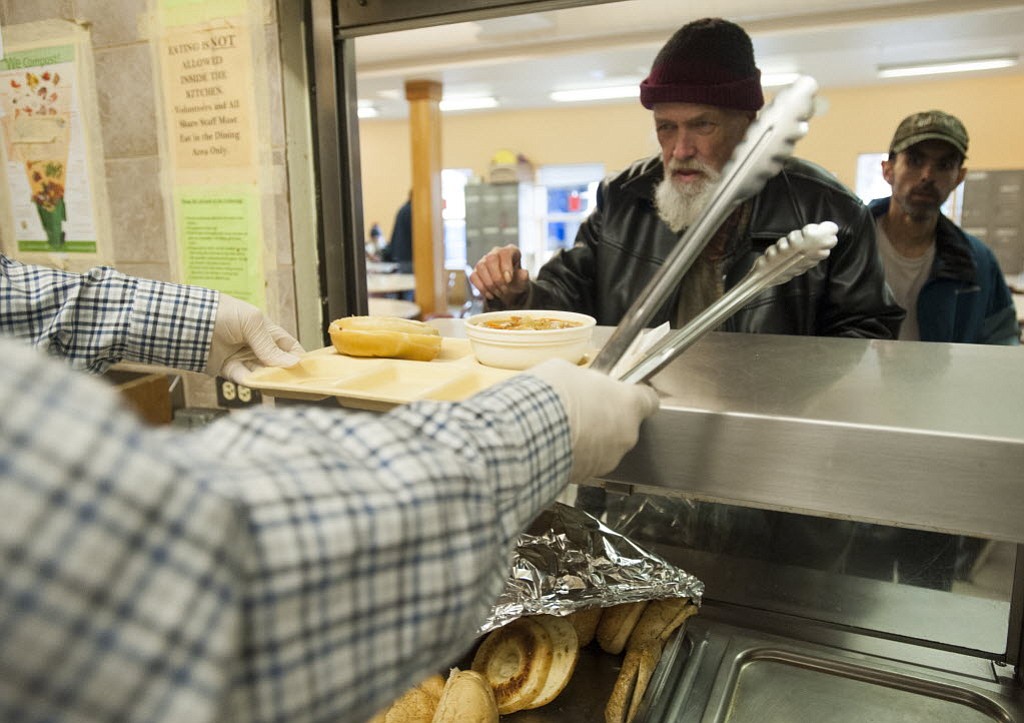A single-day snapshot of homelessness in Clark County in January 2015 proves that more funding and better coordination of services makes a difference, according to Council for the Homeless Executive Director Andy Silver.
The number of people who were completely unsheltered, living in emergency shelters or in transitional housing programs all dropped slightly from the previous year.
The annual Point-in-Time Count, an unscientific census of homeless people that’s taken on a single day every January, counted 662 homeless in Clark County in 2015. That’s a modest improvement over the last few years. The number was 695 homeless people last year and 693 in 2013. Point-in-Time Count numbers from across the nation are forwarded to the federal government, which uses them to track trends, set policy and distribute assistance.
New federal and local dollars and new housing vouchers for military veterans have paid off, Silver stressed, with the number of local homeless veterans shrinking by half — from 36 in 2014 to 18 in 2015.
Homeless people in family groups dropped from 101 individuals (in 37 families) in 2014 to 90 (in 29 families) this year. The number of people staying in emergency shelters on that day in January was virtually unchanged: 227 in 2014, 226 in 2015.
That’s a cause for celebration, Silver said, but he added: “We fear these numbers will increase in the near future if broader housing issues are not addressed.”
The city of Vancouver recently convened an Affordable Housing Task Force to meet monthly and recommend policies the city can enact, both to protect low-income tenants from displacement when rents rise and to encourage developers to build more truly affordable rental housing. The task force was launched in reaction to reports of rents rising and the poorest tenants at Courtyard Village Apartments — and other local complexes — left with no local, affordable place to go.
The Council for the Homeless amassed a community fund with donations from the public and helped many of those tenants get resettled. But some did wind up homeless, Silver added. The January homeless numbers don’t really reflect the Courtyard Village crisis, he said, since many of those residents had to vacate later in the winter and spring.
Chronic problems
One homeless subgroup grew fairly substantially: the chronically homeless. Those are the people who tend to have lots of barriers to housing, Silver said, such as criminal records, past evictions and bad credit. They may also be the ones who suffer most acutely from problems that keep from making progress in life — like mental illness, drug addiction, developmental delays.
The number of chronically homeless in Clark County rose from 80 in 2014 to 103 this year. Silver said that rise is an indicator of the tightness of the local housing market, with apartment vacancies generally hovering around 2 percent, according to the city.
In a market that tight, any blemishes at all on your record are legitimate reasons for a landlord to pass you by and keep looking for a tenant who’s likely to be more reliable and less demanding, he said. Chronically homeless people have the biggest red flags as far as landlords are concerned — so they stay homeless.
“In the current rental market it is very difficult to find apartment owners and property management companies that will rent to this population, even if service providers are paying the rent and providing support,” he said.
Now under construction on West 13th Street is Lincoln Place Apartments, a 30-unit dormitory for the worst-off chronically homeless. The developer is the Vancouver Housing Authority. The building is expected to open in spring 2016.




